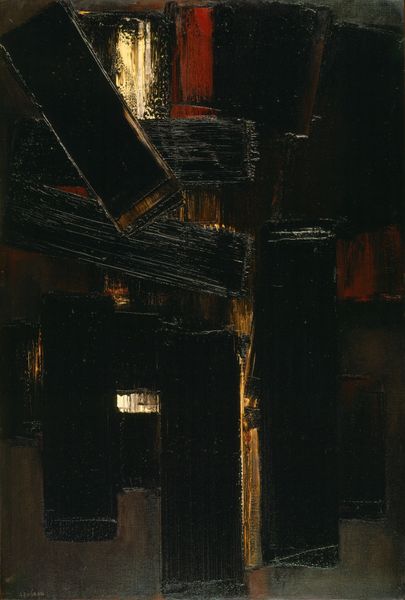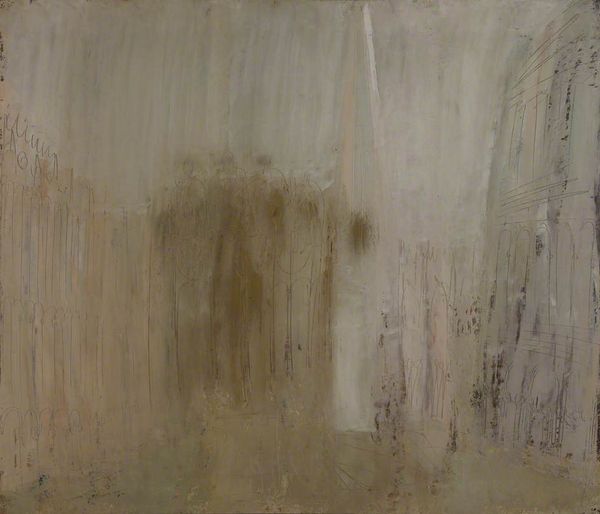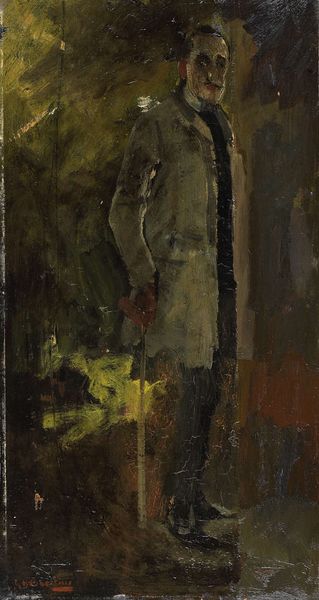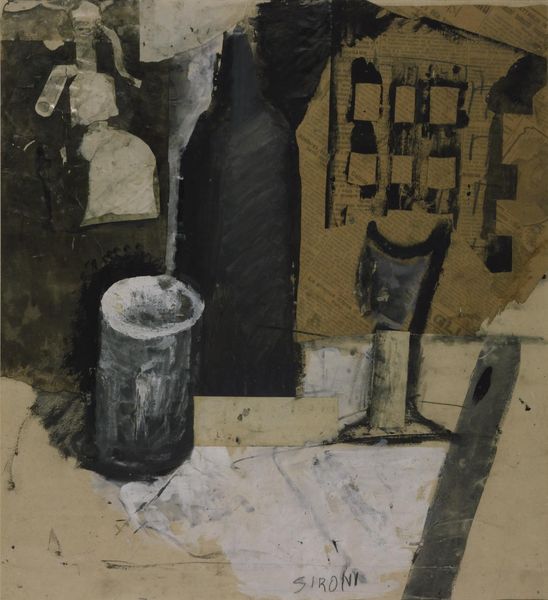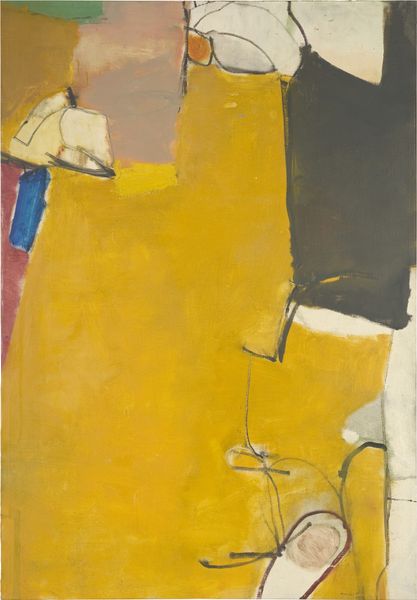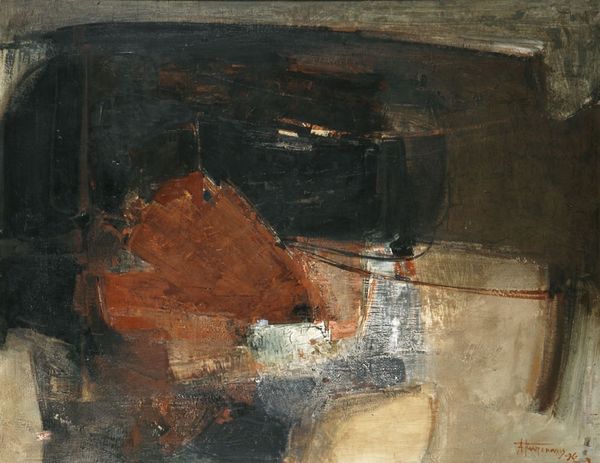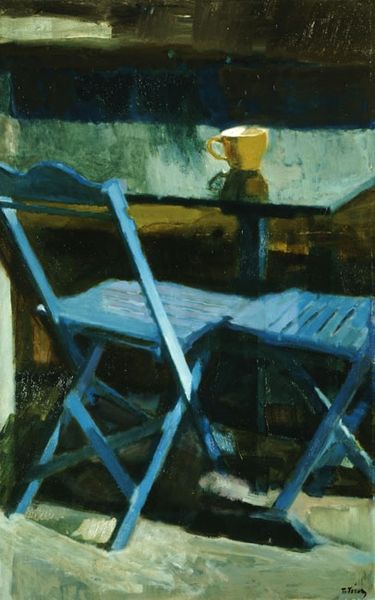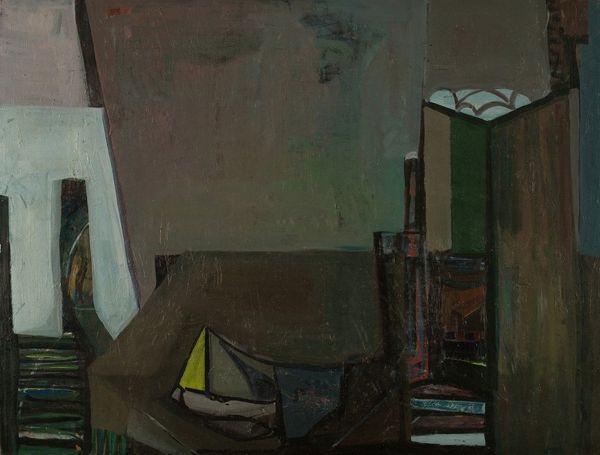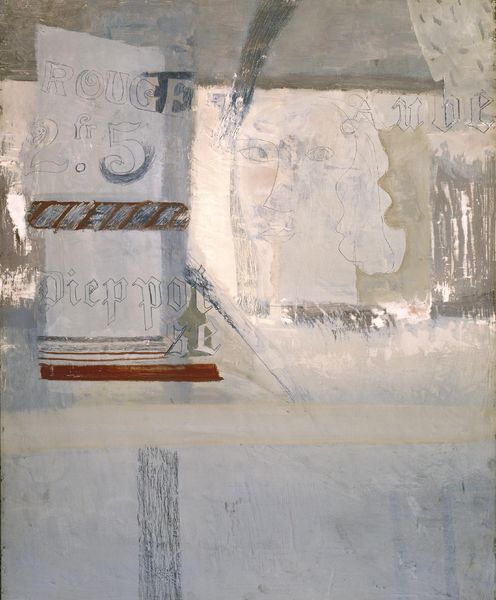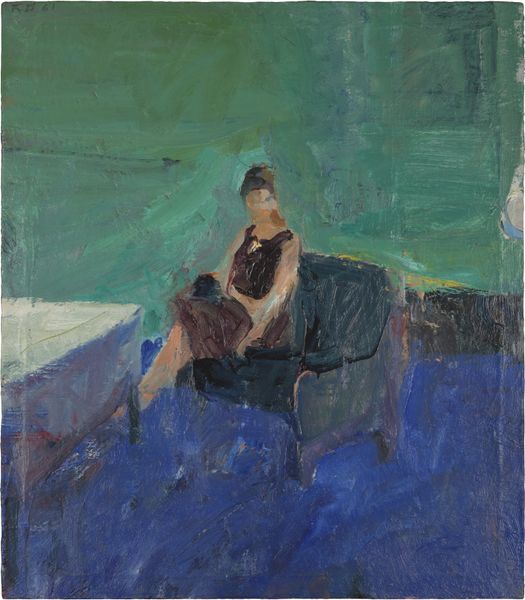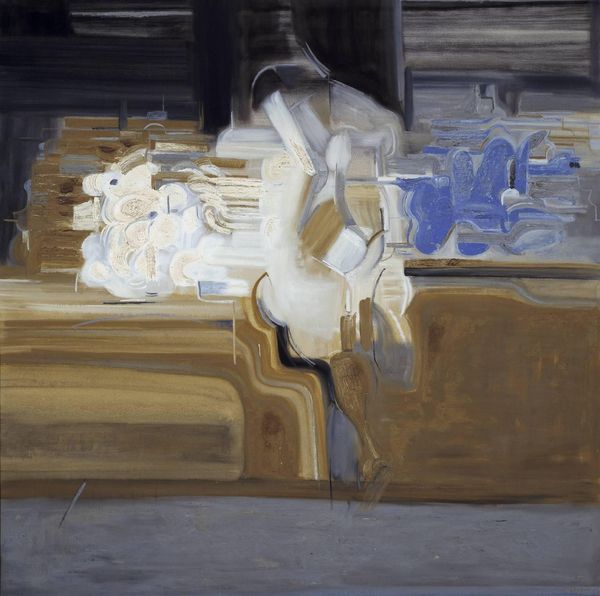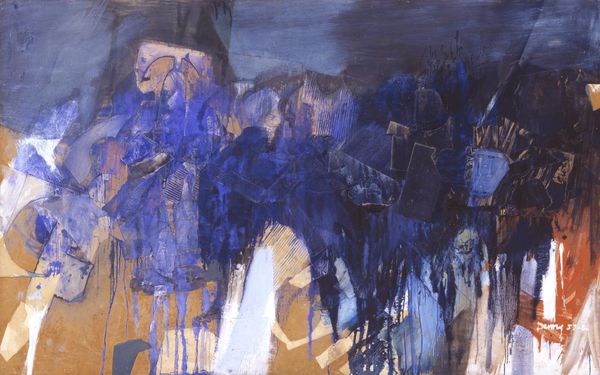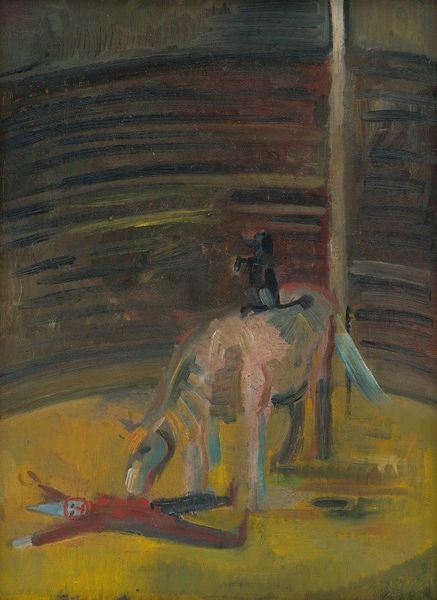
acrylic-paint
#
acrylic
#
acrylic-paint
#
form
#
oil painting
#
abstraction
#
line
Copyright: Oleg Holosiy,Fair Use
Curator: Editor: Here we have Oleg Holosiy’s "Still Life with Bottles" from 1988, made using acrylic paint. The painting’s really striking – almost raw in its execution, and I find the dark colour palette quite somber. What draws your attention when you look at it? Curator: I'm immediately struck by the artist's hand, the sheer materiality of the paint. Look at the drips and the layering – Holosiy isn't trying to create an illusion, but rather showcasing the properties of acrylic. What does the "still life" genre mean in the late 80s when consumer culture starts shifting? Editor: It feels like it challenges the traditional idea of a still life as something precious or carefully arranged, doesn't it? The bottles themselves are simplified to near-abstract forms. It appears less concerned with imitating reality and more about the artist's engagement with the paint itself. Curator: Precisely. Think about the context: the Soviet era, shifting political landscapes. Does the use of cheap, accessible material like acrylic tell us something about artistic production at the time, perhaps a rebellion against the expectations or limitations? Holosiy's process becomes the message here. How do you interpret that raw, almost careless application of material? Editor: It’s almost as though the painting itself is decaying, mirroring a kind of cultural or societal fatigue. I wonder, could the rough brushstrokes suggest a break from previous Soviet Realism styles? Curator: That's a keen observation. It’s a tangible representation of the artistic shift underway. The artwork reflects more than an aesthetic choice – it embodies a cultural transition visible through material use and art making choices. Editor: I hadn't thought about the material implications that deeply before, but I can certainly view how it is much more than a display object. I will think about this material context more often. Curator: Exactly. Art's not just what it depicts, but what it's *made* of and how, isn't it?
Comments
No comments
Be the first to comment and join the conversation on the ultimate creative platform.
